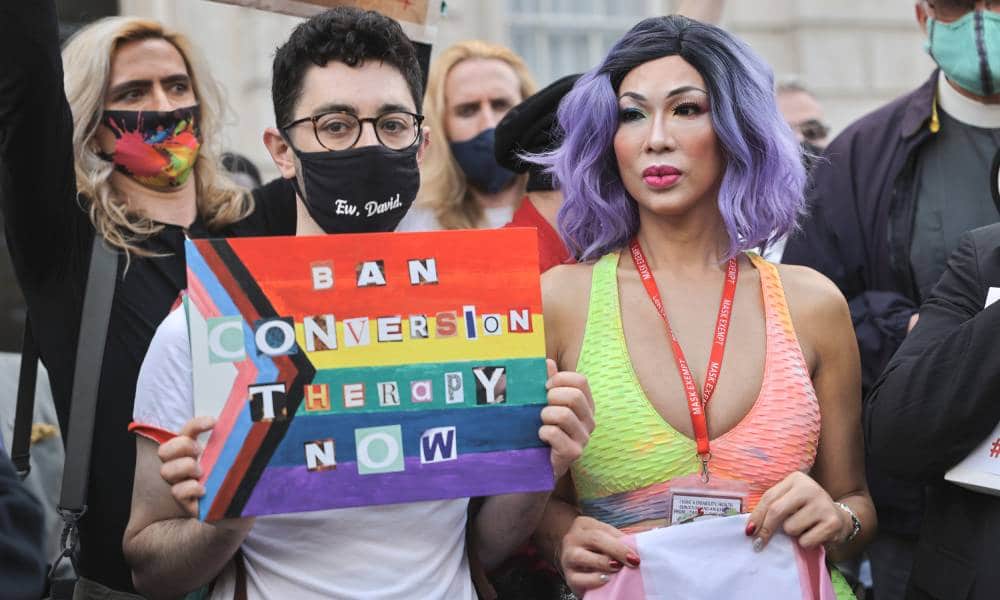Minnesota to ban ‘barbaric’ conversion therapy as governor bypasses Republican lawmakers

Minnesota governor Tim Walz speaks during press conference about public safety as the Derek Chauvin murder trial goes to jury deliberations on 19 April 2021. (Photo by Stephen Maturen/Getty Images)
Minnesota’s governor Tim Walz has announced that he will sign an executive order ending the “discredited, barbaric practice” of conversion therapy in the state.
The order comes despite a pushback against the ban from Minnesota’s Republican lawmakers.
WCCO-TV reported the state’s House, which is controlled by a Democratic majority, passed a proposal to ban conversion therapy in 2019, but the bill failed to pass the Republican-controlled Senate.
Walz’s executive order will bypass the Minnesota legislature and ban conversion therapy in the state. Walz is expected to sign the order Thursday (15 July) morning, according to WCCO-TV.
A total of 20 states in the US have banned conversion therapy for minors while four more have partially outlawed the discredited practice, according to Family Equality. Several cities in Minnesota have already banned conversion therapy including Minneapolis, Duluth and the state’s capital, St Paul.
According to Newsweek, Democratic senator Scott Dibble said it was “past time” legislatures ended “this discredited, barbaric practice in Minnesota”. The comments came after the previous bill banning conversion therapy was struck down by Republican senators.
“It is unconscionable that some of the very people elected to protect the most vulnerable Minnesotans chose to ignore their stories of pain and harm and the outcry from thousands of their supporters to end this archaic form of treatment,” Dibble said at the time.

An activist holds a sign reading ‘Ban conversion therapy now’ during a demonstration against the use of conversion therapy. (Photo by Hesther Ng/SOPA Images/LightRocket via Getty Images)
The American Medical Association, the American Academy of Pediatrics, the American Psychological Association have all publicly disavowed conversion therapy.
According to a 2020 survey by the Trevor Project, 10 per cent of the 40,001 LGBT+ youth surveyed reported undergoing conversion therapy. Of this group, over three quarters (78 per cent) said they underwent conversion therapy when they were under the age of 18.
Over three in five (61 per cent) LGBT+ youth reported undergoing formal conversion efforts to change their sexual orientation while eight per cent said it was to change their gender identity. A quarter (27 per cent) reported they experienced formal conversion efforts for both sexual orientation and gender identity.

